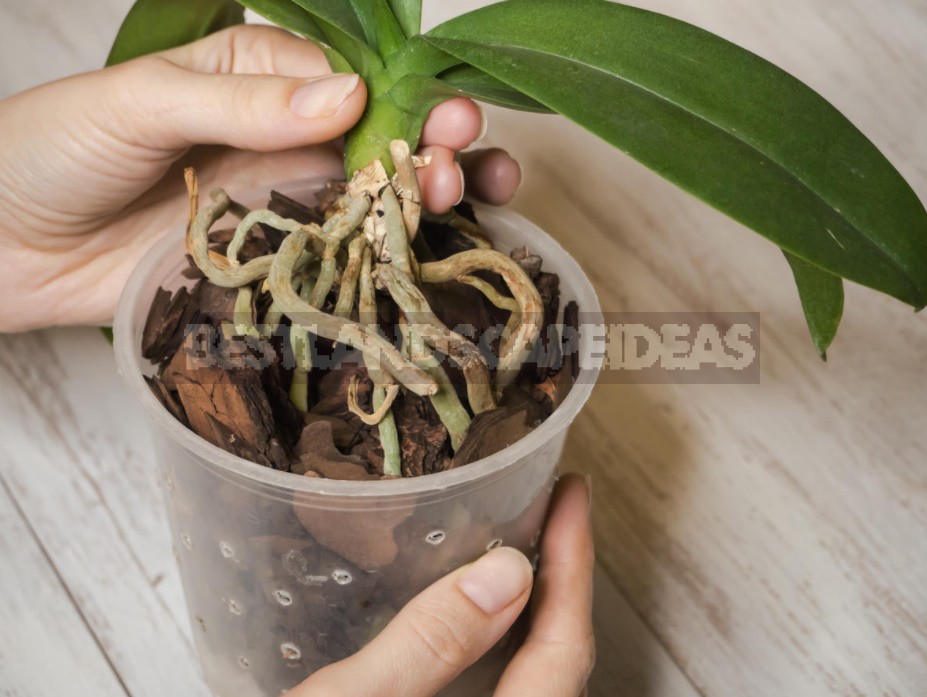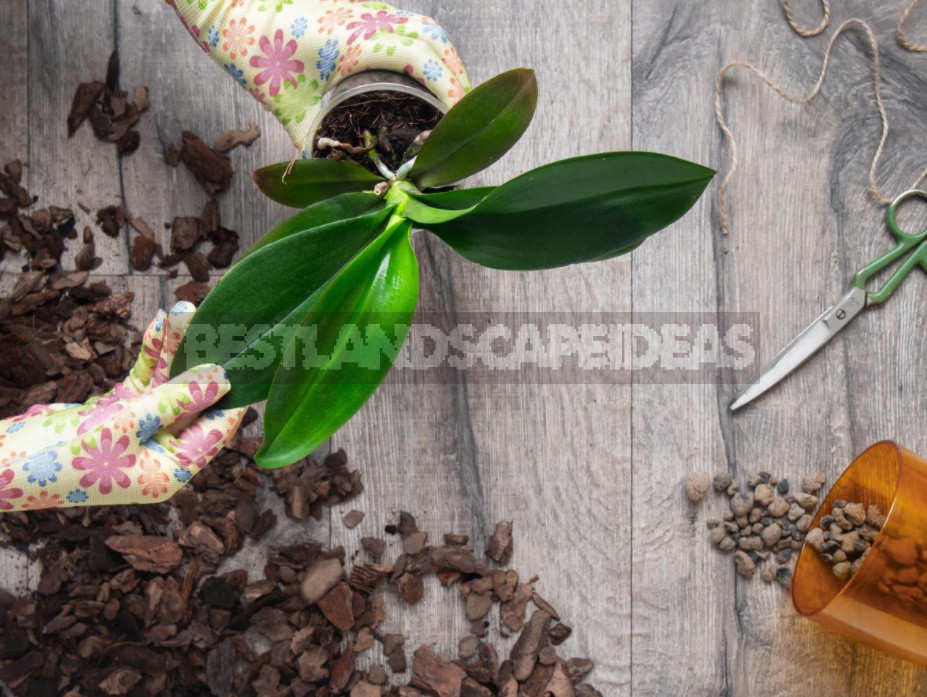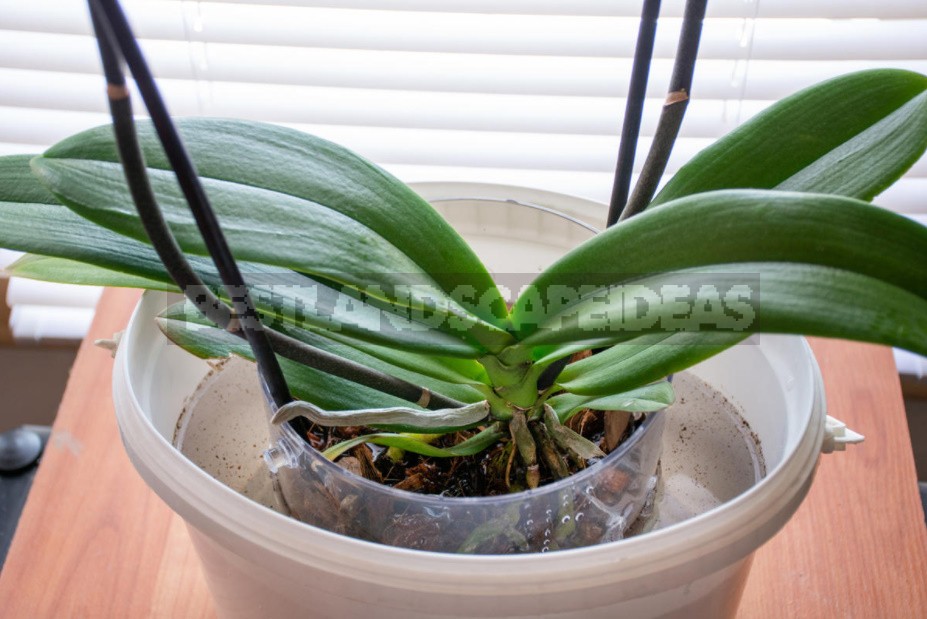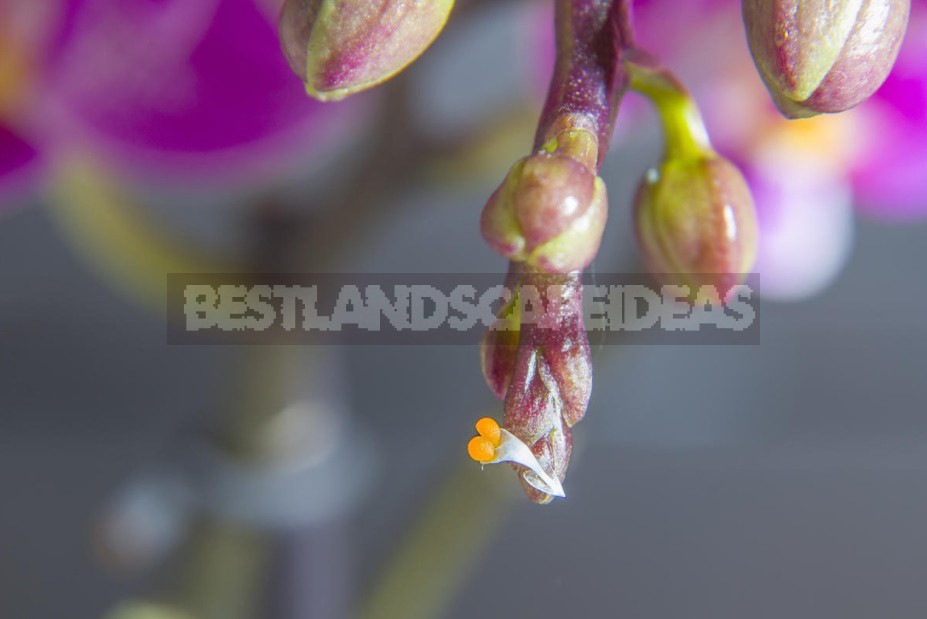More recently, phalaenopsis was an unaffordable luxury, and they were legendary as the most capricious flowers. I would like to dispel this myth and share my personal experience and observations of these beautiful “butterflies”.
It all started with a gift. On the first day of spring, on my birthday, I was given a beautiful phalaenopsis with flowers of a delicate lilac color. I put the flower on the table near the south window. Watered when the roots become silvery-gray, and after flowering, the plant is transplanted to a different substrate.
Now I have eight phalaenopsis in my collection – and almost four years of experience.

Some plants I bought — I was sorry to leave them to die without help. I knew it was very risky, but it was worth it. Here are some tips on how to properly select and resuscitate a plant.
How to choose and resuscitate an orchid
1. Inspect the roots when buying
First of all, pay attention to the roots of the plant. If there are at least a few living ones (after watering they are green, and later — gray), then the orchid can be taken provided that the aboveground part of the plant is in decent condition.

2. Transplant the orchid
At home, such a flower must be transplanted (according to my observations, orchids very quickly grow roots in pure expanded clay).

For transplanting, prepare expanded clay of a small fraction, if the plant has very few roots (2-3 pieces), or large expanded clay — if there are more of them. Carefully remove the flower. If there is a peduncle, it is better to cut it, as well as all rotten, dry and soft roots.
All sections should be treated with charcoal or cinnamon. Of all the three components, I like cinnamon the most — it is easy to use and does not dry the roots.
Since the purpose of the transplant is to build up the roots, the pot should be taken small, transparent, with many holes on the walls and bottom. From the tightness of the roots begin to grow actively, and expanded clay allows them to breathe freely.
3. Organize proper watering
After such a transplant, the flower is not watered for about 4-10 days. But if you see that the roots become gray, you can sprinkle the expanded clay and the pot with water.

In the future, you can add a little mineral growth stimulator to the water for irrigation. this will help the plant to recover faster and get stronger.
4. Make a small greenhouse
If the specimen is without roots, but the leaves are in good condition, then place the orchid in a greenhouse (it can be made from an aquarium, a jar or a plastic bottle) on a wet sphagnum moss. The main thing is to regularly ventilate the greenhouse and maintain a constant temperature and humidity, as well as provide good artificial lighting. Under such conditions, the roots will appear very quickly. When the roots are about 4-5 and they reach 5 cm, it will be time to plant the phalaenopsis in a pot. In the future, the care will be the same as for a healthy flower.
Another way to root phalaenopsis
There is another way to increase the roots of the Orchid. To do this, take a jar, pour a little water into it (preferably distilled) and put an orchid rosette with leaves there. At the same time, the rosette should not touch the water, and the leaves should be placed on top of the jar. Since moisture will evaporate from the leaves, they need to be sprayed often, watching the growth point so that water does not get there and the rotting process does not begin. Under artificial light, the roots will appear in about three weeks, but it all depends on the place of maintenance and the time of year.
I want to say right away that the rehabilitation of phalaenopsis is better in the spring and summer. Take this into account when buying a plant.
What to do with orchid pests?
Sometimes in stores you can see a faded phalaenopsis in good shape, but with the presence of pests. If the conditions of your home allow, and you have a quarantine aquarium (or something like that), then you can take a chance and buy such a flower. But I want to warn you that if the house already has a decent collection of indoor plants, the risk is not justified. It is better to refuse such a flower, so as not to endanger other plants.

In my practice, there was a case with the presence of a pseudo-pest on a flower. In the store, I saw a phalaenopsis, in the very core of which was something like a spider’s web. The sellers apparently decided that it was a tick, so they discounted the plant. I thought so myself, until I brought the flower home. It was dry, so I decided to water it. After a while, at the point of growth, I saw a fairly large spider. Carefully removing it with a cotton swab and removing all the cobwebs, I soaped the plant with potassium soap (this is a special remedy for flowers), then washed everything off. The flower was transplanted, and soon it began to grow. Potash soap should be in the arsenal of every florist.
These are the ways I use to revive phalaenopsis. Sometimes you want to give a chance to beautiful plants.


















